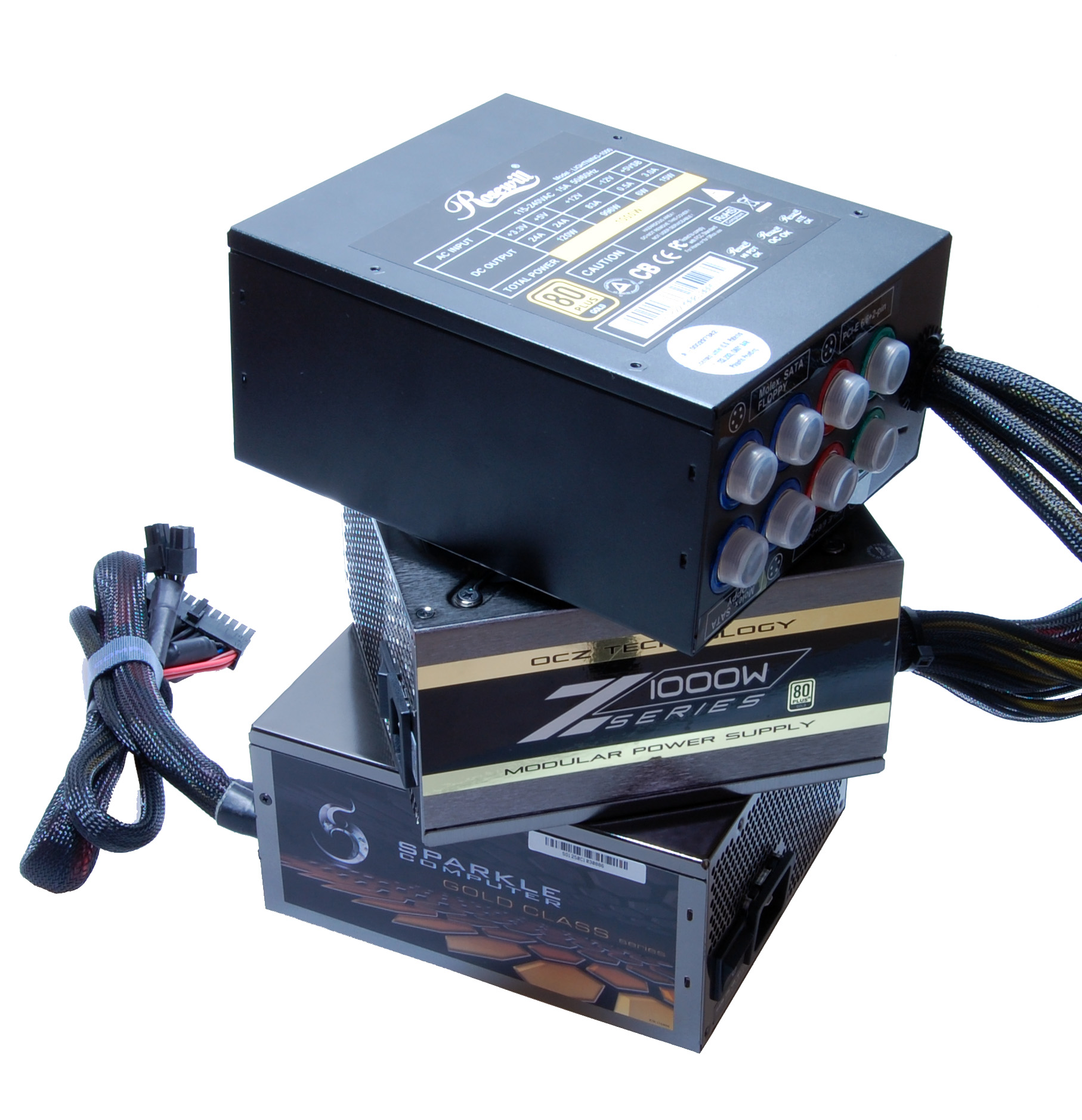Three 1000 W 80 PLUS Gold-Certified Power Supplies Tested
We received a trio of 1000 W power supplies priced between $200 and $300, so we ran them through our usual suite of tests to see if they really live up to their 80 PLUS Gold certifications. Surprisingly, all three hiccuped during efficiency testing.
Extreme Power For Extreme Users
It's easy enough to assume that 80 PLUS Gold-certified PSUs with power ratings in excess of 1000 W are not built with the broad masses in mind. It takes a serious configuration to require such high power delivery ceilings. Nevertheless, the findings in this roundup make it pretty clear how much importance the manufacturers attach to the quality of their products. Even the slightest deficiency is exposed immediately at such high loads, and the negative effects on energy efficiency are often quite severe. We received three PSUs for this piece, and we put them all through our gauntlet.
Compared to our recent roundup of gaming PSUs where the manufacturers almost buried us in test samples, the range of products is much more manageable in the high-end space. We're looking at two 1000 W PSUs from OCZ and Rosewill, along with a 1250 W PSU from Sparkle. Can the Sparkle PSU exploit its significant power rating advantage in any way? And how will these 80 PLUS Gold perform at the low loads typical of an idle PC?
Also Tested: Standby Power Consumption, EuP Standard
The European Union’s Eco-design Directive 2009/125/EC, also known as the EuP (short for Energy-using Product), contains increased stringency regarding the standby mode power consumption of PSUs from the year 2010. As more and more manufacturers are advertising the EuP certification on their PSUs, we are introducing the appropriate test methods in our reviews. Unlike previous standby measurements made with the 5 V-sb rail active, there are no loads on the rails in the EuP tests. The PSU must manage a standby power consumption of less than 1 W.
Get Tom's Hardware's best news and in-depth reviews, straight to your inbox.
-
killbits hmm, maybe next time include a super-high-end psu that doesn't suck.Reply
http://www.newegg.com/Product/Product.aspx?Item=N82E16817139014
takes any of the psu's in this review to school. -
mr_cb7 Replyhmm, maybe next time include a super-high-end psu that doesn't suck.
Seriously where is PC Power & Cooling,Corsair, or Antec!
OCZ and Rosewill thats it? OCZ is alright, but Rosewill is crap.
try theses next time:
http://www.pcpower.com/power-supply/turbo-cool-1200.html (not GOLD I know but still)
http://www.newegg.ca/Product/Product.aspx?Item=N82E16817139014
http://www.ncix.com/products/?sku=56794&vpn=HCP-1200&manufacture=Antec -
one-shot I have a 750W Corsair PSU. When gaming with my i7 920 @ stock and SLI GTX 260s, I haven't come close to 400watts, according to my UPS. If you take the number the UPS gives and factor in the efficiency of the PSU, the power draw is much less. I've seen up to 360 watts with TF2 and Test Drive Unlimited 2 so far. Although running burn tests on GPUs and CPU will draw much more.Reply
Running Bionc on CPU and F@H on both GPUs, I draw 441 watts with ALL components under HEAVY load. That's 100% on all CPU threads and GPUs. 1000W is enough for a lot of components.
I also idle at 189 Watts with SLI enabled. -
Chewie Call me a noob if you like, but I didn't realise using 230V was more efficient 115V. I guess that's a bonus for those of us down under.Reply
I just wish I could afford the kind of components that would require this kind of PSU. -
alidan ChewieCall me a noob if you like, but I didn't realise using 230V was more efficient 115V. I guess that's a bonus for those of us down under.I just wish I could afford the kind of components that would require this kind of PSU.Reply
can someone explain this to me, because i dont get it. -
tuhinz Reply9509055 said:can someone explain this to me, because i dont get it.
Its got to do with varying efficiency at different voltage levels.
Consider the following:
Power(P) = Voltage(V) X Current (I) X Power factor (Cos phi)
Now for the same amount of power transfer, at lower voltages, the current required is more (See the equation below):
P = V1 X I1 X Cos phi1 = V2 X I2 X Cos phi2
(Substitute for V1 = 230, V2 = 115, neglect the slight difference in Cos phi1 & Cos phi2)
The losses are given by :
H =I^2 X R X t (where R is the resistance of the current carrying conductor, t is time)
Thus losses increase in proportion to the current squared.
So you have higher losses (hence lower efficiency) at lower voltages. -
jimishtar "Max. temperature difference air intake to outlet - less is better "Reply
where's the logic in this?
bigger temp difference means the cooling system is more efficient and it takes the heat away from the components. why is air temp so important to you? If you cannot measure temp from inside the psu case (the components) why bother with air temp? -
tuhinz Reply9509057 said:than why can you switch between? thats what im not understanding.
You can't switch between the two. US & Japan & some S. American countries (IIRC) use 115V while the rest of the world uses 230V. PSUs meant for both markets often have a switch and you need to set it to the correct voltage for your country and plug it in. Many modern PSUs will often have a large input voltage range spanning both the voltage levels so you won't find the switch in them (My Corsair TX650 for instance).
